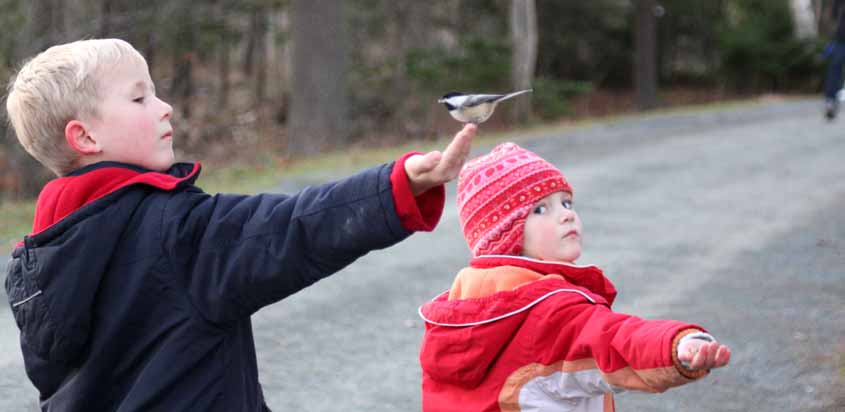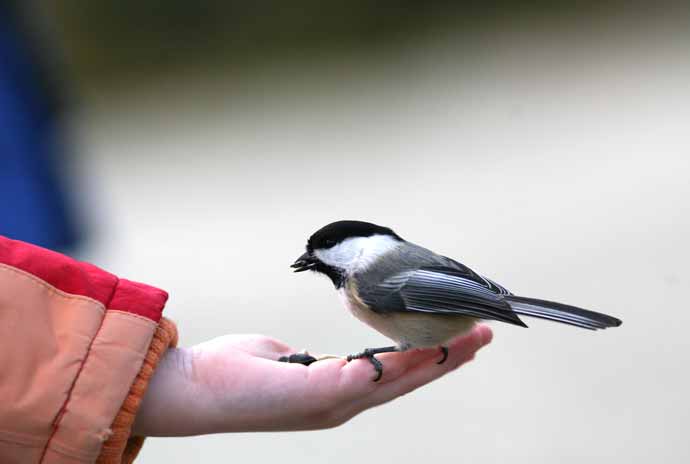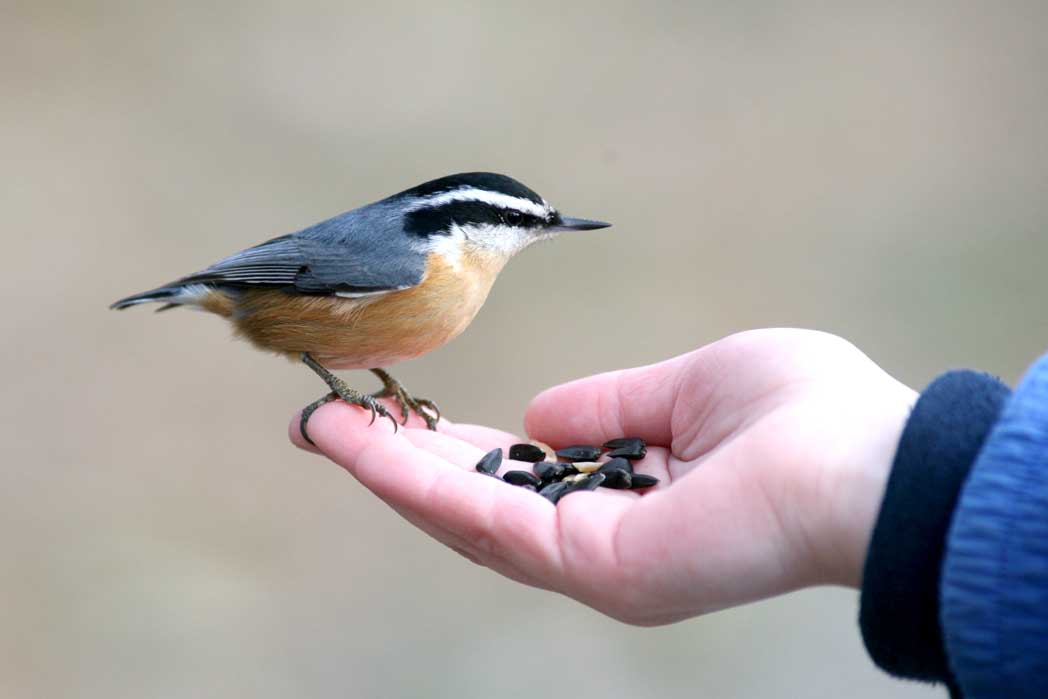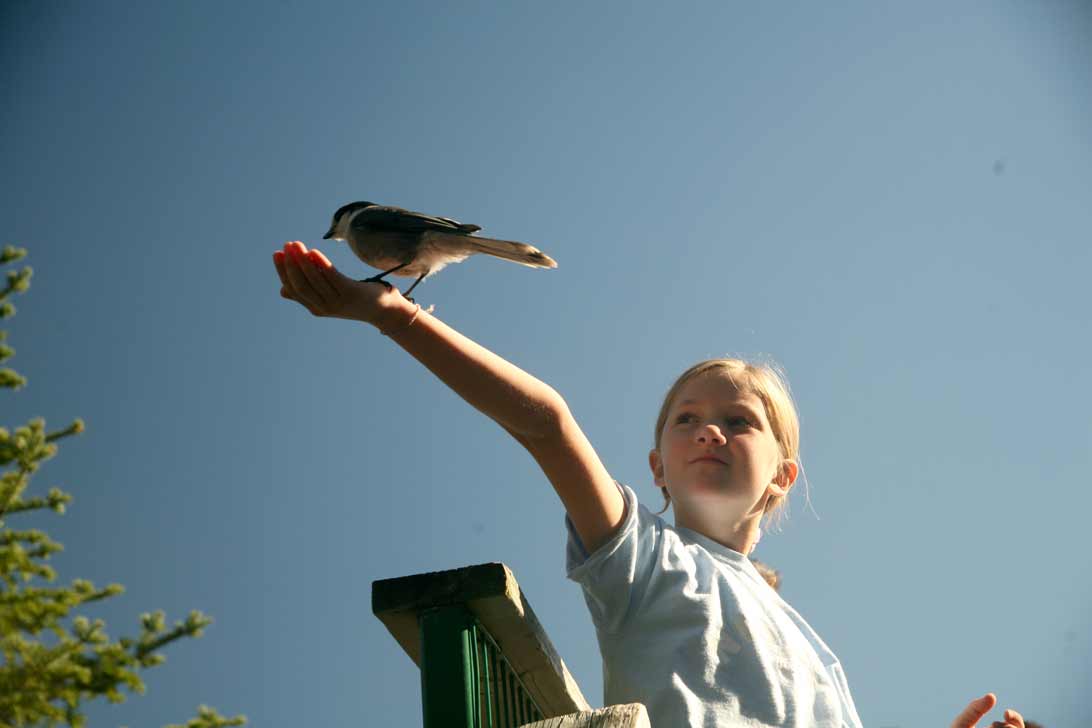|
That was ten years ago, but as is the case with many solidly built things the kids’ bird feeder still shows no sign of weakness. Sure, every
so often something is up for repair: The roof needs a new coating, the brushwoods fall off and need to be replaced, or the three large branches of the tripod rot. But with a little bit of maintenance every now and
then, the bird feeder is still in good shape and continues to be the reason for heavy air traffic during the winter months. Five different species of chickadees regularly come to the feeder – great, blue, marsh,
and coal chickadees take their meals in the feeder, while crested chickadees prefer the seeds fallen down to the lawn. And it’s not only chickadees that show up at the bird feeder: There’s chaffinches,
robins, accentors, black birds, sparrows, nuthatches, greenfinches, jays, an occasional woodpecker, every now and then a squirrel, and some pigeons that no one really likes because they leave their droppings all over
the place. But as of recent, the pigeons rather evade the bird feeder, at least ever since a sparrowhawk caught one. Of all events in and around the birdfeeder, this was probably the most thrilling
event. A solid half hour the sparrowhawk plucked and eventually dissected the pigeon that feebly flapped one wing up and down for the best part of the bloody procedure. When the job was done, the sparrowhawk
eventually flew away with the leftovers of its prey. |
|







